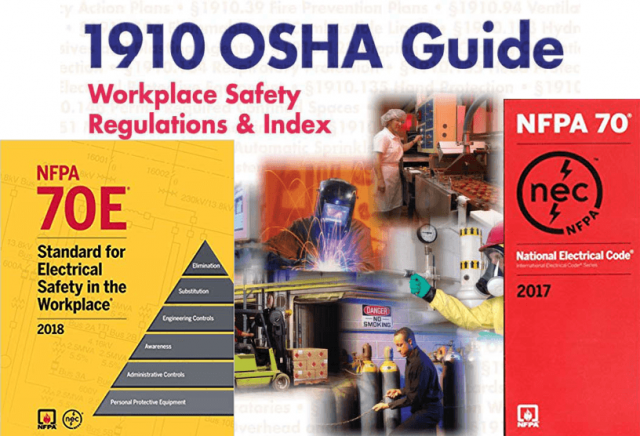Some employers assume that compliance to the standards and requirements of the National Electrical Code is as good as compliance to the NFPA 70E since both published by NFPA. It is not.
The NEC covers standards for electrical design, installation, and inspections. Some provisions in the NEC are not directly related to employee safety. NFPA 70E correlates suitable portions of the NEC with other documents applicable to electrical worker safety. NFPA 70E, not the NEC, provides standards that allow OSHA to enforce safety guidelines for employers and employees in their workplace.
OSHA mandates that all services to electrical equipment shall be performed in a deenergized state. If it is necessary to perform work live then the regulations outlined in NFPA 70E, Article 130 Work Involving Electrical Hazards, should be used as a tool to comply with OSHA Subpart S part 1910.333(a)(1) requirements.
§1910.333 Selection and Use of Work Practices. (a) General. Safety-related work practices shall be employed to prevent electric shock or other injuries resulting from either direct or indirect electrical contacts, when work is performed near or on equipment or circuits which are or may be energized. The specific safety-related work practices shall be consistent with the nature and extent of the associated electrical hazards.
(1) Deenergized parts. Live parts to which an employee may be exposed shall be deenergized before the employee works on or near them, unless the employer can demonstrate that de-energizing introduces additional or increased hazards or is infeasible due to equipment design or operational limitations. Live parts that operate at less than 50 volts to ground need not be deenergized if there will be no increased exposure to electrical burns or to explosion due to electric arcs.
NOTE 1: Examples of increased or additional hazards include interruption of life support equipment, deactivation of emergency alarm systems, shutdown of hazardous location ventilation equipment, or removal of illumination for an area.
NOTE 2: Examples of work that may be performed on or near energized circuit parts because of infeasibility due to equipment design or operational limitations include testing of electric circuits that can only be performed with the circuit energized and work on circuits that form an integral part of a continuous industrial process in a chemical plant that would otherwise need to be completely shut down in order to permit work on one circuit or piece of equipment.
NOTE 3: Work on or near deenergized parts is covered by paragraph (b) of this section.
Reference:
- Electrical Safety Code Manual
A Plain Language Guide to National Electrical Code, OSHA, and NFPA 70E
Kimberley Keller
Copyright 2010 Elsevier Inc - 1910 OSHA GUIDE
Copyright 2014 – J. J. Keller & Associates, Inc.
